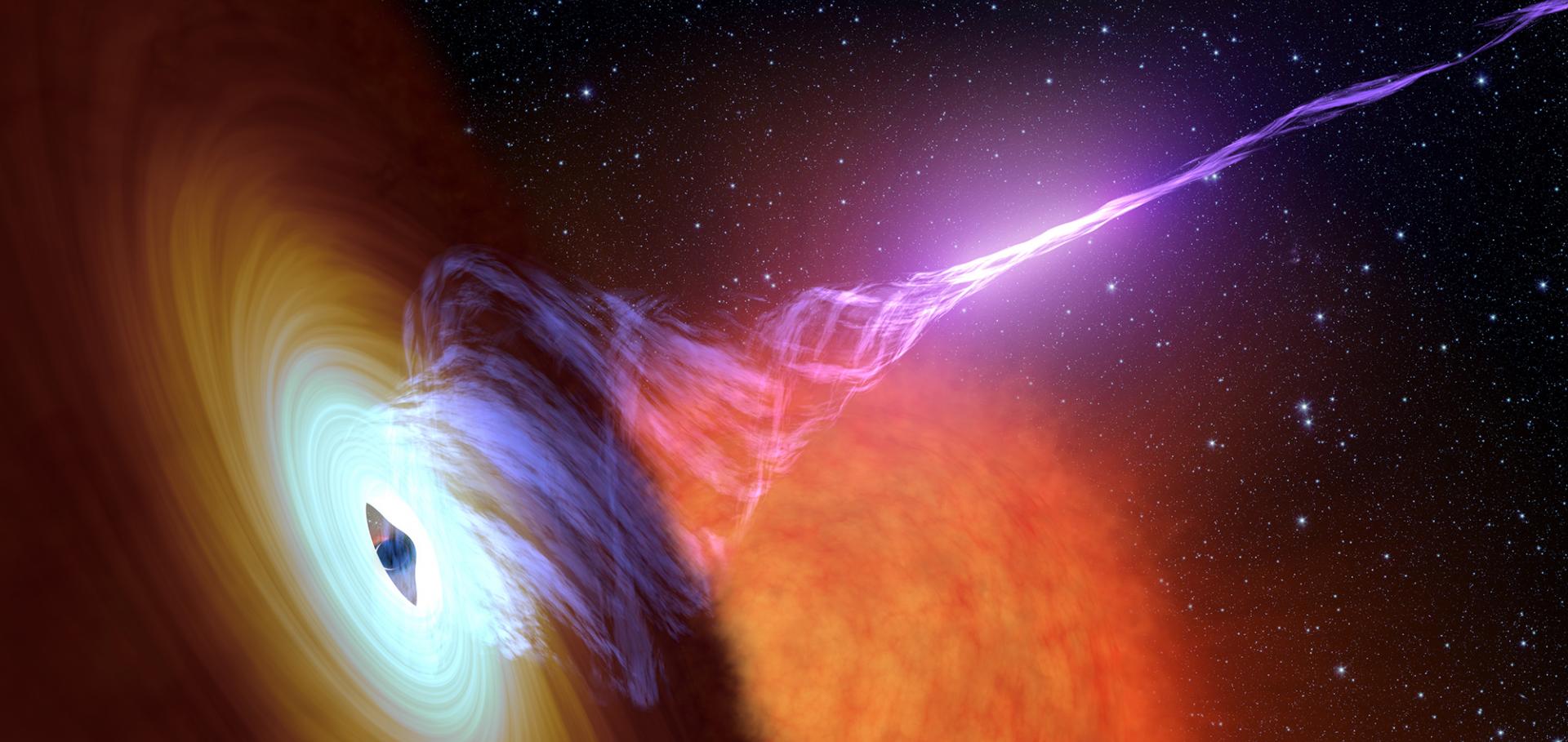Observation of inverse Compton emission from a long γ-ray burst
Nature Nature Research 575:7783 (2019) 459-463
Abstract:
Long-duration γ-ray bursts (GRBs) originate from ultra-relativistic jets launched from the collapsing cores of dying massive stars. They are characterized by an initial phase of bright and highly variable radiation in the kiloelectronvolt-to-megaelectronvolt band, which is probably produced within the jet and lasts from milliseconds to minutes, known as the prompt emission1,2. Subsequently, the interaction of the jet with the surrounding medium generates shock waves that are responsible for the afterglow emission, which lasts from days to months and occurs over a broad energy range from the radio to the gigaelectronvolt bands1-6. The afterglow emission is generally well explained as synchrotron radiation emitted by electrons accelerated by the external shock7-9. Recently, intense long-lasting emission between 0.2 and 1 teraelectronvolts was observed from GRB 190114C10,11. Here we report multi-frequency observations of GRB 190114C, and study the evolution in time of the GRB emission across 17 orders of magnitude in energy, from 5 × 10-6 to 1012 electronvolts. We find that the broadband spectral energy distribution is double-peaked, with the teraelectronvolt emission constituting a distinct spectral component with power comparable to the synchrotron component. This component is associated with the afterglow and is satisfactorily explained by inverse Compton up-scattering of synchrotron photons by high-energy electrons. We find that the conditions required to account for the observed teraelectronvolt component are typical for GRBs, supporting the possibility that inverse Compton emission is commonly produced in GRBs.MKT J170456.2-482100: the first transient discovered by MeerKAT
(2019)
Physical constraints from near-infrared fast photometry of the black-hole transient GX 339-4
(2019)
Synchrotron self-absorption and the minimum energy of optically thick radio flares from stellar mass black holes
Monthly Notices of the Royal Astronomical Society Oxford University Press 489:4 (2019) 4836-4846
Abstract:
We consider the case of radio flares from black hole X-ray binaries in which the flare spectrum evolves from optically thick to optically thin, under the assumption that this is due to decreasing optical depth to synchrotron self-absorption. We are able to place upper and lower limits on the size of the emitting region associated with a radio flare, and determine the synchrotron source magnetic field and energy as a function of size. The energy has a clear minimum which occurs close to the condition that the magnetic field derived from synchrotron self-absorption equals that calculated from equipartition. This minimum energy estimate is independent of the rise time of the event, and so may be applied to any event for which the peak flux is measured and there is evidence for self-absorption. This is a much more accurate approach to minimum energy estimation than assuming expansion at close to the speed of light. We apply this method to four examples of optically thick radio flares and find that in each case either the filling factor of the synchrotron source is considerably less than unity, or the expansion speed is considerably less than the speed of light. The combination of unity filling factor and expansion speeds close to the speed of light is completely ruled out on energetic grounds for three of the four events we consider. The inferred slowed expansion is consistent with detailed modelling of such events, which has been recently reported in the literature. The minimum power requirements associated with the flares are found to be ∼1036 erg s−1, which are easily accommodated in the context of stellar mass black hole accretion at near-Eddington levels, when these flares typically occur. However, the true jet power could still be orders of magnitude higher.Discovery of a radio transient in M81
Monthly Notices of the Royal Astronomical Society Oxford University Press (OUP) 489:1 (2019) 1181-1196


